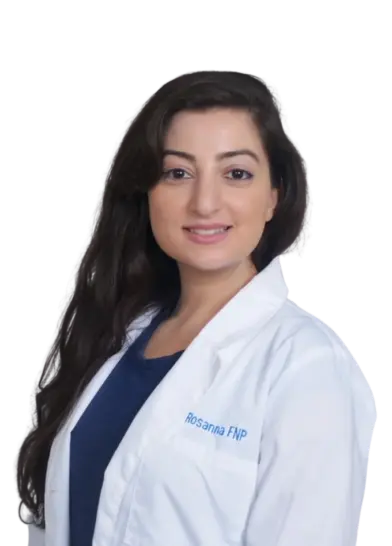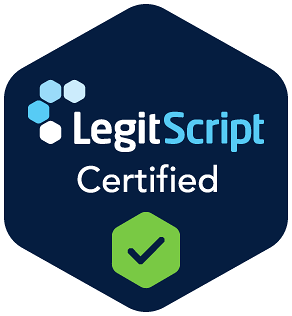
The following blog post is for entertainment and informational purposes only. It is not intended to provide medical advice or diagnosis. Please consult your doctor before making any health-related decisions.
Birth defects of blood vessels can cause a series of different problems from aesthetic concerns to dangerous complications. Traditional healing variants of surgery and laser therapy have drawbacks and connected threats.
However, Sirolimus has proven effective against vascular malformations because it can block the mechanistic target of the rapamycin (mTOR) pathway.
Now we will examine the effectiveness of Sirolimus for vascular malfunctions healing, outline its acting mechanics, clinical evidence, and possible advantages and challenges.

Acting Mechanics
The primary mechanism of Sirolimus for vascular malformations management provides the obstruction of the mTOR pathway.
Deceleration of mTORC1
The significance of the suppression of mTORC1 lies in its ability to hamper the growth, proliferation, and angiogenesis of cells. These processes actively influence the evolution and advancement of vascular malformations.
Prevention of Inflammatory Events
This medicine suppresses mTORC1. This action leads to a decrease in pro-inflammatory cytokine generation. This decrease in inflammatory processes can effectively relieve pain and swelling.
Triggering of Autophagy
Autophagy disposes and regenerates damaged components. This process is actively boosted by Sirolimus for vascular malformations. Raised autophagy can facilitate the preservation of vascular integrity and diminish anomalous vessel formation.
Clinical Evidence
Sirolimus for vascular malformations healing has been proven effective in the healing of venous and other malformations and combined developmental anomalies through numerous studies and clinical trials.
Venous Developmental Anomalies
Vascular anomalies with slow flow present venous malformations. Discomfort, inflammatory events, and functional limitations can occur. According to clinical tests, Sirolimus for vascular malformations healing effectively minimizes the size of these developmental anomalies and their symptoms. Patients treated with Sirolimus felt significant progress in pain management, mobility enhancement, and overall quality of life improvement.
Healing of Abnormal Malformations
Abnormal vessels present the hallmark of these developmental anomalies. Disfigurement and recurring infections can occur. Sirolimus for vascular malformations healing successfully reduces the size of these developmental anomalies. Through case studies and limited clinical research, notable shrinkage in lesion dimensions along with better overall health have been recorded for patients receiving this treatment approach.
Complex Combined Developmental Anomalies
Complex developmental anomalies that consist of various types of vascular abnormalities are typically more difficult to address. However, the utilization of Sirolimus for vascular malformations healing has demonstrated potential in managing such complicated combined developmental anomalies. Patients with complex anomalies have reported noteworthy progressions, such as reduced lesion size and a decrease in complication frequency after receiving this treatment option.
Outcomes of Sirolimus for Vascular Malformations Healing Process

Sirolimus treatment presents a hopeful solution for vascular malformations. It provides advantages that surpass conventional therapies. These benefits include effective clinical results, enhancements in quality of life, and the capability to potentially cure an extensive range of vascular anomalies.
Reduced Dimension
The foremost advantage of Sirolimus for vascular malformations is its potential to substantially diminish the magnitude of vascular developmental anomalies.
According to research, the use of this medicine has been demonstrated to result in a reduction in venous malformation volume, thereby resulting in less conspicuous lesions and alleviated symptoms.
Both the physical symptoms and cosmetic appearance are improved by Sirolimus for vascular malformations, as it effectively decreases the size of developmental anomalies.
This medicine has proven to significantly decrease the overall lesion burden in cases of combined or intricate vascular developmental anomalies.
Symptom Relief
A significant reduction in pain is frequently observed by patients suffering from various vascular developmental anomalies, wherein this symptom can be distressing and limiting.
Sirolimus for vascular malformations healing reduces the size of lesions, which results in reduced swelling and improved comfort along with better functionality.
Lessened discomfort and inflammation aid in improving flexibility and bodily actions, augmenting the individual’s capacity to carry out routine tasks.
Non-Invasive Method
Oral administration of Sirolimus for vascular malformations healing cancels the requirement for invasive procedures of surgeries, sclerotherapy, or laser treatments. These methods carry a lot of risk and require considerable recovery time.
This medicine’s therapy can reduce the number of hospital visits and interventions. This results in a more convenient and less disruptive treatment routine.
Systemic Effects
Sirolimus for vascular malformations healing offers a comprehensive approach to managing widespread vascular anomalies by targeting multiple lesions simultaneously, unlike localized therapies.
This medicine can bring about enhancements in overall health beyond the treatment of visible lesions by targeting underlying pathophysiological mechanisms.
Long-Term Efficacy
Long-term usage of Sirolimus for vascular malformations has been shown through clinical evidence to offer enduring advantages.
Over extended periods of time, patients undergoing treatment with this medicine frequently encounter relief from symptoms as well as a reduction in lesion size.
By consistently administering this medicine, its advantages for controlling vascular developmental anomalies can be preserved, thereby providing a dependable and continuous method of management.
Possibility for Broad Application
Its broad therapeutic potential is evidenced by its proven benefits in managing both venous and other developmental anomalies. A full-fledged treatment approach can be accomplished by employing Sirolimus for vascular malformations, which proves to be efficacious in addressing multifarious vascular anomalies entailing numerous types of vascular developmental anomalies.
Safety and Manageability
Although Sirolimus for vascular malformations healing may cause side effects, they are usually controllable and milder in comparison to the hazards linked with operative procedures.
Dose adjustments and supportive care are usually sufficient in managing common side effects like mouth ulcers, gastrointestinal disturbances, and mild immunosuppression.
This medicine is a feasible treatment alternative for many patients as its potential to reduce lesion size, mitigate symptoms, and enhance quality of life typically outweigh the associated risks.
Future Directions
The promising results of Sirolimus for vascular malformations have prompted ongoing and future research to explore its mechanisms, enhance effectiveness, and widen applications.
Determining Optimal Dosage and Treatment Regimens
It is crucial to determine the most efficient and secure dosage for various vascular developmental anomalies. The research will emphasize comprehending how the dose-response ratio works in order to enhance therapeutic advantages while reducing adverse effects.
The research will examine the most effective length of time for Sirolimus for vascular malformations to attain enduring advantages while minimizing prolonged vulnerability to potential hazards. This encompasses scrutinizing sporadic dosing regimes in comparison with uninterrupted therapy.
Biomarkers of Response
Additional investigation is necessary to gain a comprehensive understanding of the molecular mechanisms by which this medicine influences vascular developmental anomalies. Such inquiry should encompass an examination of its effects on angiogenesis, inflammation, and cellular proliferation.
The identification of biomarkers that forecast optimal response toward Sirolimus for vascular malformations healing in people can aid in customizing treatments and enhancing end results. These markers may be a combination of genetic, proteomic, and metabolic manifestations.
Long-Term Safety and Efficacy
To comprehend the lasting consequences of Sirolimus for vascular malformations healing and uncover any potential enduring complications, it is crucial to conduct extensive analyses that track its effectiveness and safety over extended spans. These long-range studies will provide invaluable insights into the chronic impacts of this medicine.
Gaining information from a more diverse group of people beyond clinical trials will offer valuable knowledge about the practical efficacy and safety of Sirolimus for vascular malformations. This may involve monitoring after its release in the market as well as enrolling people into patient registries.
Patient-Specific Protocols
The utilization of genetic and genomic information to individualize Sirolimus for vascular malformations can enhance its effectiveness while decreasing negative outcomes. The comprehension of unique genetic variances could assist in anticipating reactions to Sirolimus treatment, thus customizing proper courses of healing accordingly.
To improve therapeutic outcomes, it is beneficial to create customized treatment protocols that consider individual patient factors such as age, severity of malformation, and any accompanying medical conditions.
Mechanisms of Resistance
It is crucial to comprehend why certain patients do not react to Sirolimus for vascular malformations healing or build up resistance progressively. To achieve this, research will concentrate on recognizing the mechanisms of resistance and devising ways to surmount them.
To enhance treatment outcomes and counter-resistance, it is necessary to investigate alternative pathways that can be combined with this medicine.
The administration of Sirolimus for vascular malformations has proven to be beneficial. Notably, it results in a considerable reduction in lesion size while relieving symptoms and improving overall quality of life for patients. Additionally, its non-invasive application method combined with long-lasting effectiveness presents as an optimistic alternative to conventional therapies within this field. With further investigation and clinical refinement, its usage will become more widespread and recognized as a key factor for managing vascular developmental anomalies effectively.






